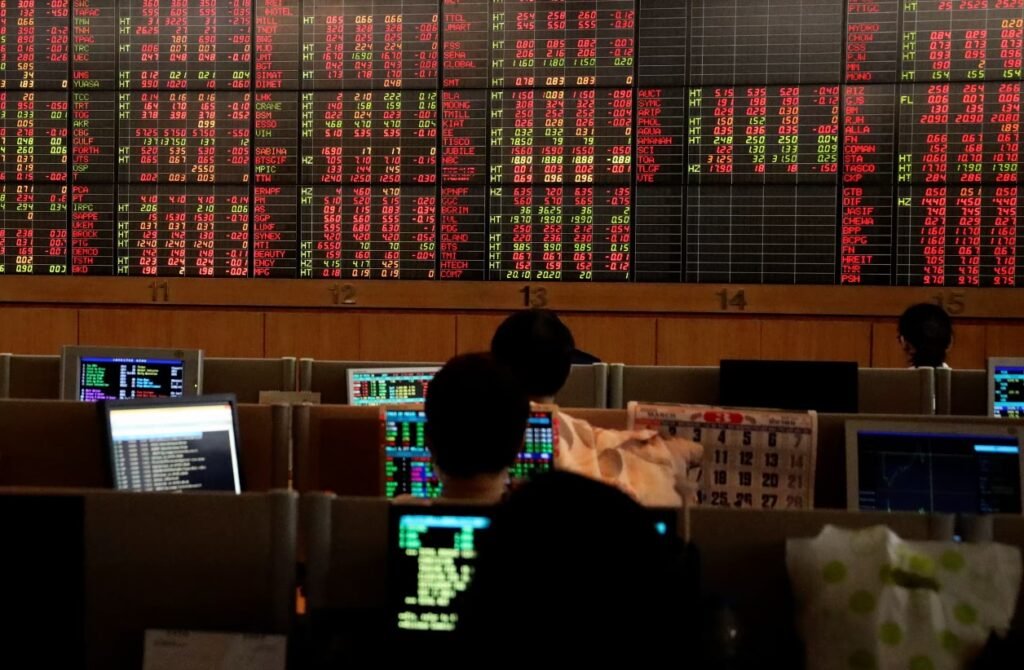Asia stocks fell on Wednesday after faltering growth in China and Europe heightened concerns about global economic momentum, while the dollar firmed as investors weighed the outlook for Federal Reserve interest rates.
Investor sentiment was dampened by a private-sector survey on Tuesday that showed China’s services activity expanded at the slowest pace in eight months in August, reflecting weak demand. The Caixin/Markit services Purchasing Managers’ Index (PMI) fell to 51.5 from 52.8 in July, staying above the 50-mark that separates growth from contraction, but indicating a loss of momentum.

“The China decline was bigger than expected,” said Redmond Wong, Greater China market strategist at Saxo Markets. “The Chinese government has become more active and is relaxing more regulation but whether it is good enough remains to be seen,” he added.
China is also set to release lending and inflation data in the coming days, as well as trade data on Thursday, with analysts expecting exports and imports to continue their declines, but at a slower pace.
Europe’s manufacturing and services sectors contract in August
Manufacturing data from Germany, Britain and the euro zone also showed declines, while their service sectors fell into contraction. The IHS Markit Euro Zone Composite PMI, seen as a good gauge of economic health, dropped to 51.1 in August from July’s 51.8, its lowest since November 2020.
“The Europe data were rather weak. We think there is still a high chance to have a mild recession in the U.S. and Europe toward the end of the year or beginning of next year,” Wong said.
The European Central Bank (ECB) is expected to announce a reduction in its pandemic emergency purchase programme (PEPP) at its meeting next week, as inflation in the euro zone hit a 10-year high of 3% in August, well above the ECB’s target of close to but below 2%.
Japan’s Nikkei outperforms as yen weakens, oil prices surge
Japan’s Nikkei 225 share average stood out to gain 0.52% with the weakest yen rate since November boosting exporters such as automakers, while energy shares outperformed amid a surge in crude oil prices.
The yen fell to 110.42 per dollar, its lowest level since Nov. 9, 2020, as the greenback rose to a near six-month high against a basket of currencies. The dollar was supported by rising U.S. Treasury yields and expectations of a hawkish stance from the Federal Reserve.
U.S. crude was up 0.06% at $86.74 a barrel, after hitting a six-week high of $86.90 on Tuesday, as Hurricane Ida’s damage to U.S. offshore energy production and OPEC+’s decision to stick to its output policy boosted supply concerns.
U.S. markets set to open lower amid Fed uncertainty
London and U.S. markets are poised to open lower with FTSE futures and E-mini futures for the S&P 500 index down 0.42% and 0.13% respectively at 0520GMT.
Investors are digesting recent signals on potential U.S. interest rate hikes. Fed Governor Christopher Waller said on Tuesday that the latest round of economic data was giving the U.S. central bank space to see if it needs to raise rates again.
“[The] Fed is a focus for us, we think they have more work to do with potential for U.S. rates to continue heading higher,” said John Milroy, investment adviser at Ord Minnett.
The Institute for Supply Management (ISM) is set to release U.S. services PMI on Wednesday, which could provide further clues on the strength of the U.S. recovery and the inflation outlook.
